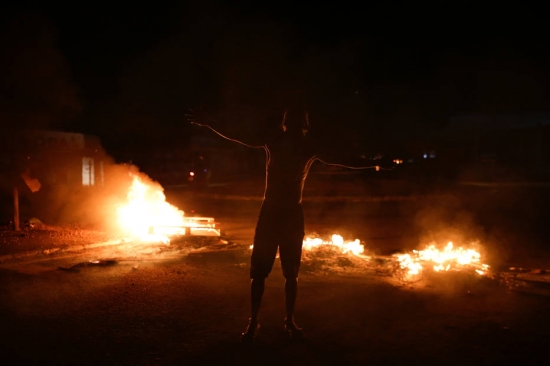RIO DE JANEIRO, BRAZIL – With no power, residents of Amapá’s cities face rubber bullets and stun bombs. A wave of uprisings over the 6th day of blackout occurred in the peripheries.
On Sunday, November 8th, the federal government said that 76 percent of electricity had been restored, using a rotation system.

However, residents say that the service has failed to return at several points in the capital city Macapá and its surrounding communities. On Saturday night and Sunday morning, a protest in the Remedios II neighborhood in the city of Santana, 20 kilometers from the capital, was repressed by the riot squad of the State Police’s Special Operations Battalion. The officers broke up the protest, which blocked one of the access roads to the town’s 120,000 inhabitants with fire and tires.
Protests by residents over the failure to solve the power and water network outage, which relies on pumps, have been taking place since last Tuesday at different points in the state, including the capital. A power substation caught fire on Tuesday, which led to the blackout.
The leadership of the Amapá police gave the go-ahead for the deployment of the riot squad against the protests, which have no clear leaders. In the preceding days less tense demonstrations occurred in São José, Pedrinhas and Muca. These are all low-income neighborhoods in the southern region of Macapá.
In Santana, residents complained about the frustrated hope of temporary restoration in the neighborhoods located at Cláudio Lúcia Monteiro Street, at the city’s entrance, where the Santana Forum operates. They were promised power for six hours on Saturday. In less than 60 minutes, the supply was cut off.
The same was recorded in other points of the city. This contrasts with the seeming normalization the federal government is trying to show. In the communities, complete darkness heightens the fear of violence.
The most common complaint on the neighborhoods’ streets concerns the inability to use fans and air conditioning. As a result, the Amazon mosquitoes take advantage of the open windows to render the hot nights deeply unpleasant.
The residents have no information about the rotation criteria for selecting the neighborhoods that will be reconnected, nor about the periods in which power will be available. “We are complaining because we can’t stand this any longer. We don’t know what else to do. We have no electricity, no internet, no communications. This is not fair. For some there is power, for others there isn’t,” said housewife Marta Lúcia Moraes, 47.
It was 10:50 PM on Saturday when protesters surrounded the Estadão news team. Men and women, young and old, from Remedios II, ran over each other venting their anger. There is no communication, one said. There is no energy to cool the expensive meat, claimed another. There is no water to shower. There is no water to clean toilets. “We can’t keep silent. We can’t accept this they are trying to impose. We have to go out to the street to demonstrate, to fight for our rights. Our food is running out, spoiling,” said Juliana de Jesus.
Clash
Four youths emerged with shirts covering their faces. To the reporting team, they said that the State Police had threatened to arrest them arbitrarily, but did not provide details. “A report? We want answers, we don’t want to destroy anything,” said one of them. The riot squad arrived quietly. Under the command of a lieutenant, they started on the group with stun bombs. Demonstrators reacted by hurling sticks and rocks.
As they progressed towards the barricades, they advised reporters to be cautious at the crossroads: the local population often carries rifles and, protected by the dark, they could turn violent. The surge extended for another hour. There were no records of injuries until early in the day. Police officers expressed concern over the escalation of the riots should the situation not return to normal soon.
Source: O Estado de S. Paulo

